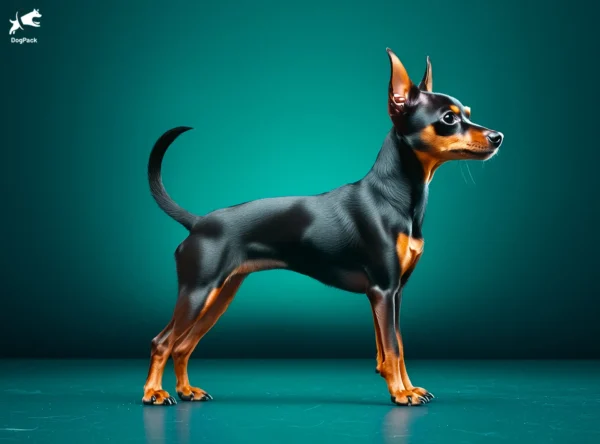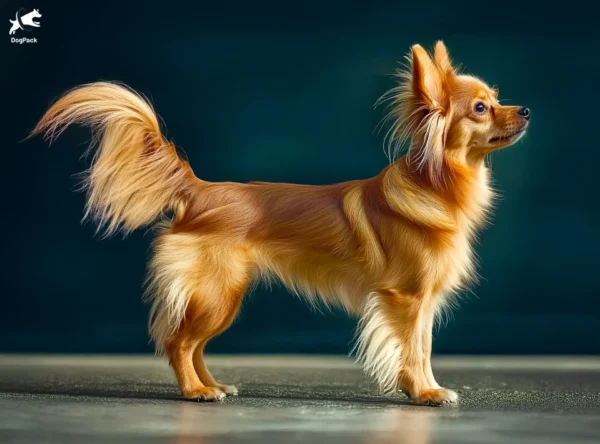Prague Ratter Dog Breed Info & Overview
The Prague Ratter, one of the world’s smallest dog breeds, hails from the Czech Republic and boasts a lively, agile nature. Once prized for its exceptional rat-hunting skills, this tiny yet confident companion is now cherished for its affectionate and intelligent demeanor. With its compact size and playful spirit, the Prague Ratter is an ideal choice for city dwellers seeking a devoted and energetic pet.
Characteristics
Pictures
Breed History
This charming canine originated in the heart of Prague, where it was bred as a skilled ratter on urban estates. Its ancestors were prized for agility and keen hunting instincts, helping control rodent populations in old castle courtyards. Early records indicate its presence among Bohemian aristocrats who valued its swift and clever nature.
Historical accounts reveal that these dogs were not only efficient hunters but also admired for their lively character and refined looks. They quickly became a favorite among noble families and were often seen accompanying owners on daily routines. Their reputation spread across Europe as symbols of resourcefulness and elegance.
Modern enthusiasts continue to honor its unique heritage by preserving its original traits. Dedicated breeders work hard to adapt this rare miniature for today’s lifestyle while maintaining its storied past. As a result, this breed remains a treasured companion for those who appreciate both history and agility.
Temperament, Personality
This spirited companion is known for its alert and curious nature, easily capturing the hearts of those it meets. With a lively demeanor and a sharp mind, it quickly forms strong bonds with its family. Its playful energy is balanced by moments of gentle calm, making it a delightful presence in any home.
Despite its small stature, it exhibits a bold personality and unwavering loyalty. Often reserved around strangers, early socialization brings out its friendly side. Owners appreciate its instinctive intelligence, which shines through during both play and more challenging tasks.
Its unique personality emerges in everyday interactions—responding eagerly to commands and showing affection with every glance. The combination of cleverness and charm makes training rewarding, while its natural curiosity ensures endless moments of fun. Overall, this dog is a blend of spirited playfulness and tender warmth.
Physical Characteristics
Small in size yet striking in appearance, this breed boasts a compact, well-proportioned body that exudes agility and elegance. Its expressive eyes and alert ears add charm, making it an eye-catching companion. Distinctive features set it apart from other small dogs, emphasizing both function and finesse.
The short, sleek coat offers a smooth texture that requires minimal upkeep. Natural colors complement its delicate structure and active build. The practical yet attractive appearance reflects a history of purposeful breeding for both beauty and performance.
Despite its modest frame, the dog carries an air of confidence and sophistication. Well-defined musculature and an energetic stance hint at its hunting heritage. These physical traits not only serve a functional role but also contribute to its overall allure as a standout miniature companion.
Health Issues
Like many small breeds, this dog may be prone to dental issues and minor joint problems. Regular dental check-ups and a balanced diet are essential to ward off common ailments. Routine veterinary visits help catch potential issues early and ensure overall well-being.
Some individuals might experience food sensitivities, so monitoring dietary reactions is advised. Consistent exercise helps maintain joint and muscle strength, while vaccinations and parasite control remain a vital part of health management. Preventive care is key to a long, active life.
Genetic predispositions in this breed are uncommon, yet responsible breeding and proper care are essential. Owners should consult professionals regarding supplements and preventive measures. With attentive care and regular check-ups, these dogs typically enjoy robust health and longevity.
Grooming Needs
The Prague Ratter’s short, sleek coat makes grooming relatively straightforward. Brushing once a week is usually enough to keep the coat healthy and free of loose hair. Occasional baths with a gentle shampoo maintain its polished appearance without stripping natural oils.
Routine grooming checks help monitor skin health and spot potential issues early. Regular nail trimming and ear cleaning are also important to ensure overall hygiene. Grooming sessions can double as bonding time between the dog and its owner.
For those preferring low-maintenance pets, this breed offers the perfect balance of beauty and practicality. Its moderate grooming needs leave more time for playful outings and training. Overall, care routines are manageable for busy pet owners while keeping the dog looking its best.
Exercise Requirements
This active breed thrives on regular exercise, needing at least 1–2 hours of activity each day. Brisk walks, interactive play sessions, and short runs help burn off energy while providing mental stimulation. Consistent exercise is key to maintaining both physical and mental fitness.
Owners should vary activities to prevent boredom, which can lead to unwanted behaviors. Games like fetch or agility drills are especially beneficial. Although small, this dog eagerly embraces diverse exercise routines that keep it happy and engaged.
A well-planned exercise routine reinforces training and discipline. Regular activity not only builds a strong bond between owner and pet but also channels its natural energy positively. With a mix of structured and playful exercise, this breed remains agile and ready for adventure.
Training Tips
This breed responds exceptionally well to positive reinforcement, making training sessions both effective and enjoyable. Consistent reward-based methods, using treats and praise, work best with this small, eager learner. Patience and creativity are key when introducing new commands.
Early socialization and obedience classes help establish good manners and a strong foundation. Short, engaging training sessions tailored to its attention span yield the best results. Its intelligence ensures that it quickly understands and retains new skills.
Occasional stubbornness can be overcome with persistent, gentle guidance. Incorporating play into training keeps sessions fun and productive. With a calm, structured approach, owners will find that this dog excels in learning new tricks and commands.
Nutrition, Diet
The Prague Ratter has a fast metabolism that calls for a balanced diet rich in proteins and essential nutrients. High-quality kibble or raw food diets are ideal, with portion sizes of about ½ to ¾ cup daily divided into two meals. Tailor portions based on its activity level for optimum energy.
It benefits from diets that include lean meats, fresh vegetables, and healthy fats. Avoid fillers or low-grade ingredients that might compromise its energy or coat health. Specialized formulas for small breeds can provide the necessary balance of vitamins and minerals.
Regular weight monitoring is important to avoid overfeeding. Always consult with a veterinarian to adjust portions based on age, activity, and any dietary sensitivities. With careful nutritional management, this miniature companion remains vibrant and full of energy.
Adoption, Breeders
Finding a reputable source is crucial when considering this breed. Prospective owners should research breeders specializing in this rare miniature, ensuring they follow ethical practices and provide complete health records. Engaging in online breed communities can also guide you to trustworthy sources. The Prague Ratter Club is a great resource for learning about breed standards and responsible breeding.
A great starting point is to visit dedicated breed clubs and kennel associations. Resources such as the American Kennel Club and the Czech Kennel Club offer detailed breed standards, health testing protocols, and breeder directories. These sites are valuable for in-depth research.
Adopting from a reputable breeder ensures that you welcome a healthy, well-bred companion into your home. Always arrange in-person visits and ask for documentation regarding lineage and health. Community recommendations and online forums further enhance your confidence in choosing the right source.
Family Pet?
This breed makes an excellent family pet by blending energy with affection. Its compact size suits apartment living, yet it remains playful and interactive, capturing the hearts of both adults and children. With proper socialization, it adapts well to various household dynamics.
Its alert and friendly nature helps it quickly integrate into family life. Early exposure to children and other pets encourages harmonious interactions, while its intelligence ensures it learns household routines swiftly. Families appreciate its lively spirit and gentle demeanor.
When given consistent training and care, it becomes a cherished member of the family. Its adaptable personality and manageable size make it a strong candidate for households seeking a vibrant, loyal companion who adds warmth to daily life.
Right For You?
Deciding if this breed fits your lifestyle is essential. Ideal for those who appreciate a small, agile companion, it thrives in environments that provide regular physical activity and mental challenges. Its unique heritage and spirited character make it a standout choice for dedicated pet owners.
It suits urban dwellers who enjoy active lifestyles, as its compact size makes it perfect for apartment living while still demanding ample exercise. Its energetic nature calls for owners willing to invest time in daily play and training sessions.
This breed is best for experienced dog enthusiasts who understand the nuances of caring for small breeds. Reflect on your routine and available time to ensure that its active yet charming personality aligns with your lifestyle and expectations.
Conclusion
In conclusion, this rare, miniature canine offers a delightful combination of agility, charm, and a storied past. Perfect for active urban dwellers and small families, its lively personality and low-maintenance grooming make it an appealing choice. Though its spirited nature requires consistent exercise and training, the rewards are a loving, loyal friend with a unique heritage. With commitment and care, this dog becomes a joyful companion, bringing memorable adventures and lasting affection to any home.
FAQs
-
How does the Prague Ratter differ from a Chihuahua?
Though similar in size, the Prague Ratter is leaner, more athletic, and has longer legs than a Chihuahua. It was originally bred for rat hunting, making it more agile and prey-driven. Unlike the Chihuahua, it tends to be quieter and less yappy.
-
Is the Prague Ratter the smallest breed in the world?
Yes, the Prague Ratter is often considered one of the smallest dog breeds, even smaller than the Chihuahua. Weighing between 2–6 pounds (1–3 kg) and standing about 7–9 inches (18–23 cm) tall, it holds a record for its tiny yet sturdy build.
-
How does the Prague Ratter behave around strangers?
A Prague Ratter is naturally cautious around strangers but not as aggressive as some toy breeds. It may bark to alert its owner but tends to warm up once it feels secure. Early socialization helps prevent shyness or nervousness in new environments.
-
Can a Prague Ratter be trained for agility or dog sports?
Yes! Despite its small size, the Prague Ratter excels in agility due to its high energy and intelligence. It enjoys obstacle courses, fast runs, and mentally stimulating games, making it a great competitor in mini agility courses.
-
How rare is the Prague Ratter outside of the Czech Republic?
The Prague Ratter is still quite rare outside of Central Europe, especially in North America and the UK. While its popularity is growing, finding a breeder outside of the Czech Republic, Slovakia, or Poland can be challenging.
Breed Ratings
The Prague Ratter is clever, quickly learning new commands and adapting to various situations with ease.
This breed is highly playful, enjoying interactive games and lively activities throughout the day.
Bursting with energy, it requires ample exercise to keep its spirited nature well balanced.
With a short, sleek coat, this breed sheds minimally, making maintenance straightforward.
Exhibiting a moderate prey drive, it remains controlled and well-adjusted with proper training.
Grooming is simple due to its low-maintenance coat, requiring only occasional brushing and care.
Responsive to positive reinforcement, it is moderately easy to train and enjoys learning new tricks.
It can handle short periods alone but thrives on regular companionship to avoid separation anxiety.
While not overly vocal, it may bark to alert owners; consistent training helps manage this tendency.
This breed rarely drools, making it an appealing, low-mess companion indoors.
Generally sociable with other dogs when properly socialized, it fits well into multi-pet households.
With proper care and regular check-ups, this breed typically enjoys good overall health.













